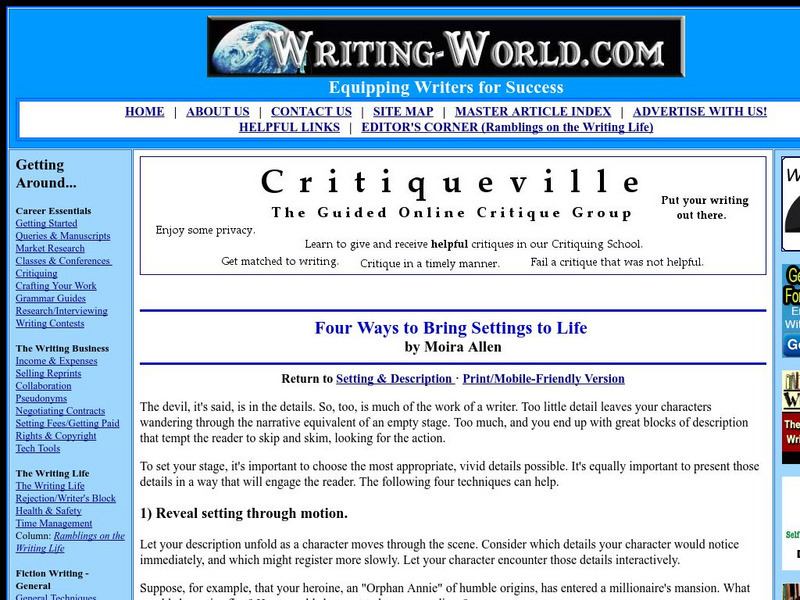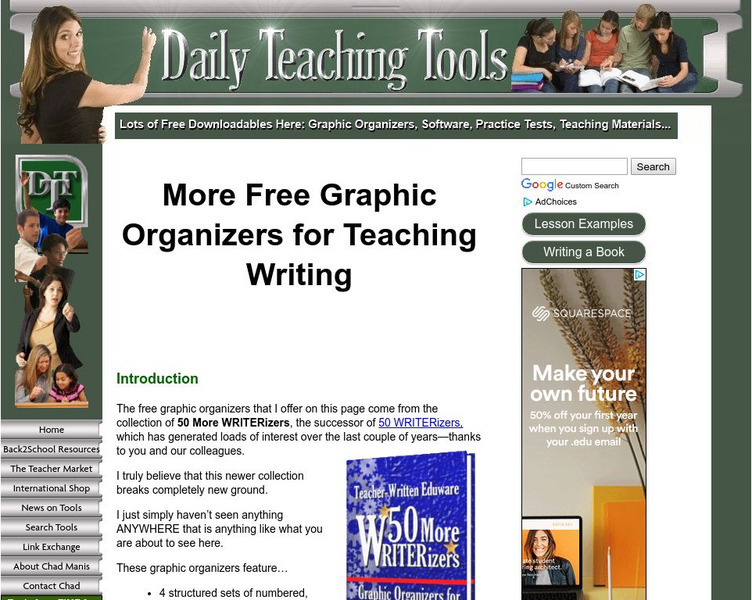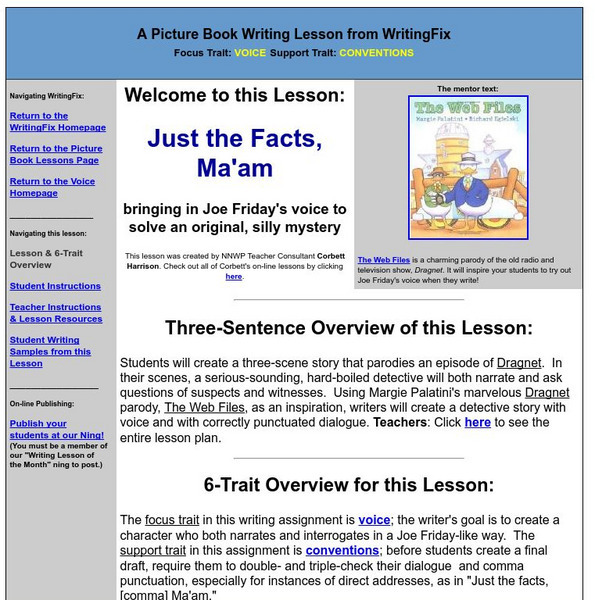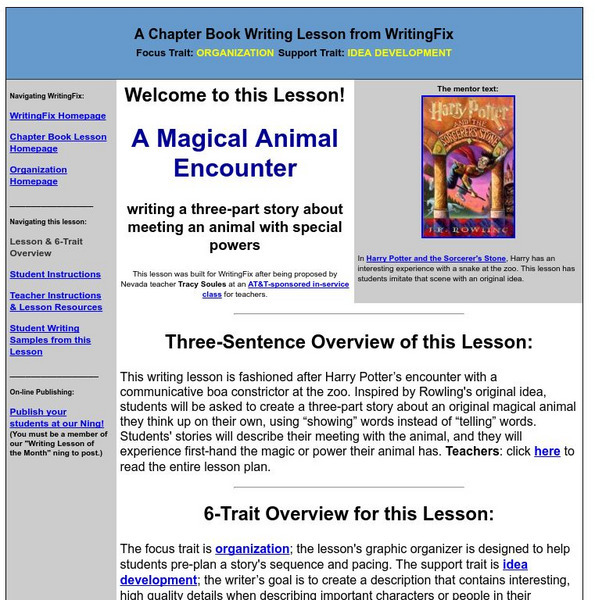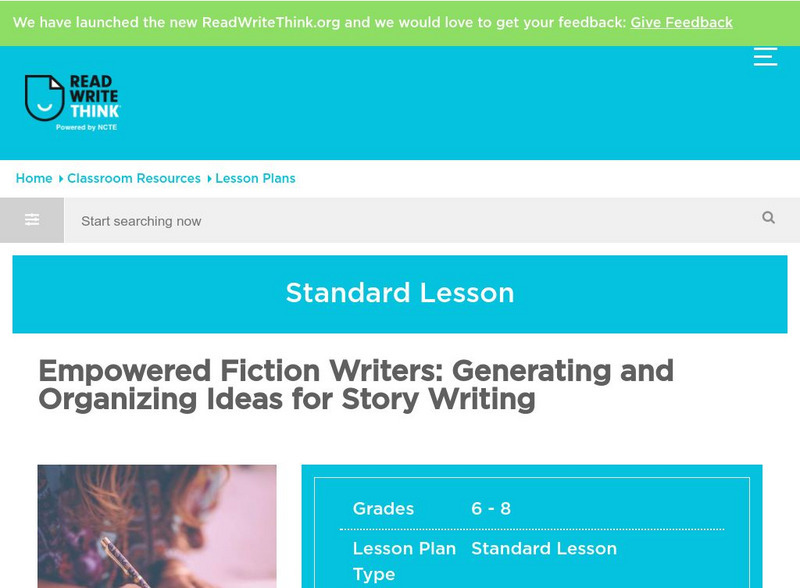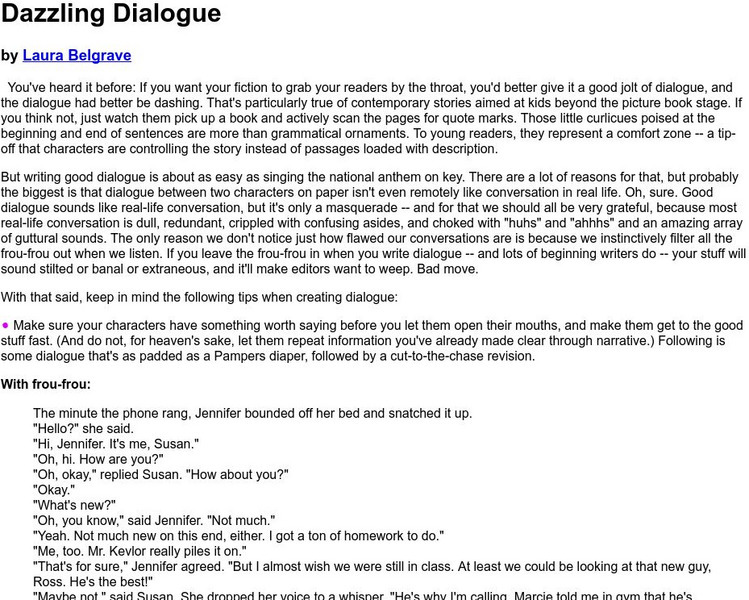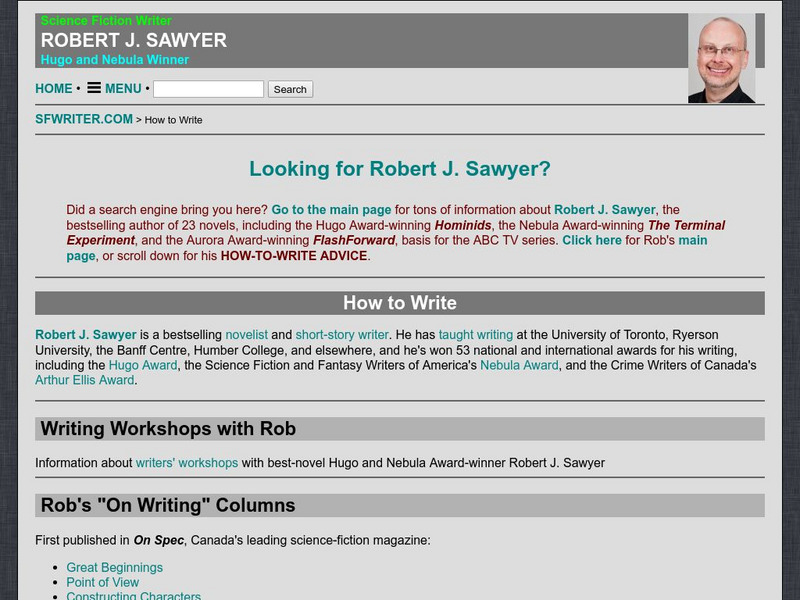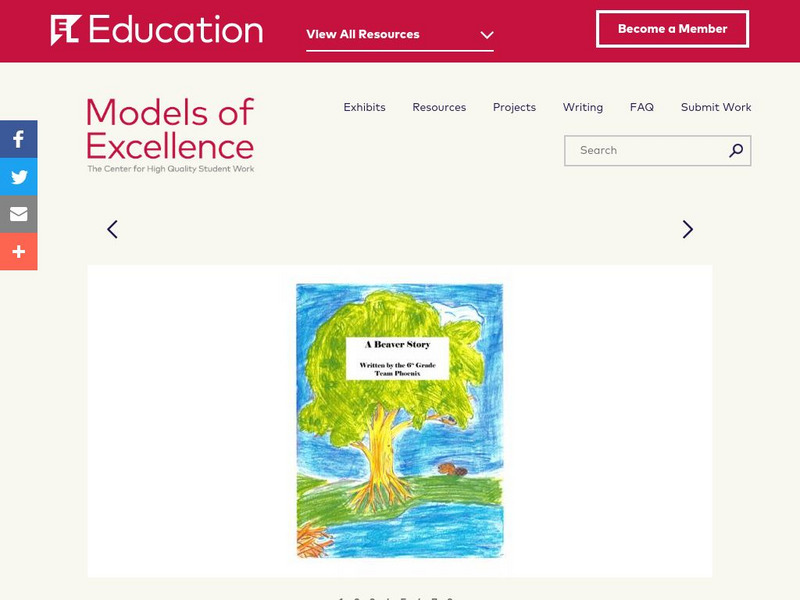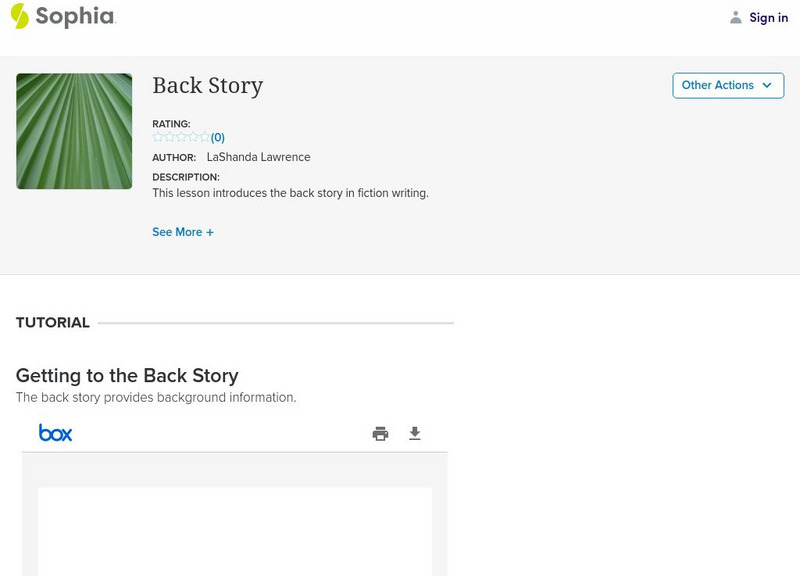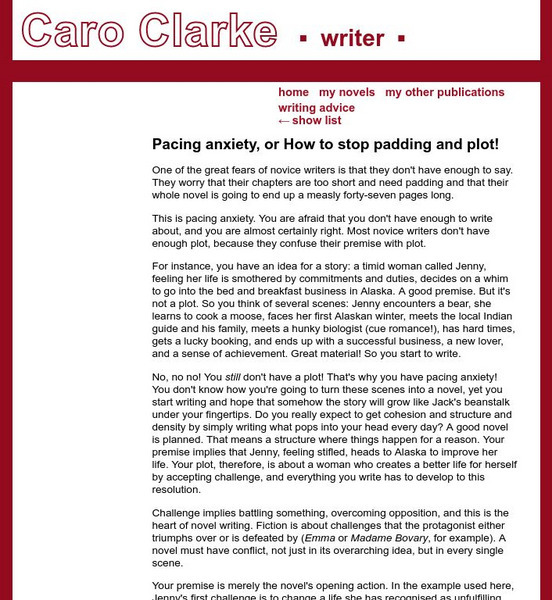ReadWriteThink
Read Write Think: Blending Fiction and Nonfiction
Contains plans for four class periods that ask learners to blend narrative and expository writing after reading fiction and nonfiction selections. In addition to student objectives and standards, these instructional plans contains links...
TED Talks
Ted: Ted Ed: How to Write Descriptively
The point of fiction is to cast a spell, a momentary illusion that you are living in the world of the story. But how do writers suck readers into stories in this way? Nalo Hopkinson shares some tips for how to use language to make your...
Other
Writing World: Four Ways to Bring Settings to Life
A great resource outlining four major ways to make settings appear more real and genuine in fiction. Deals with themes such as motion, experience, mood, and the senses. W.11-12.3d Sensory/precise lang narratives
Daily Teaching Tools
Daily Teaching Tools: Graphic Organizers for Teaching Writing
This Daily Teaching Tools collection provides graphic organizers for writing. Elaborate graphic organizers for the following areas are provided: persuasive essays, expository essays, paragraph writing, fiction pieces, narrative writing,...
Other
Fiction Writing Tips: Creating a Vivid Setting
Some excellent guidelines to consider when evaluating your setting in a short story or novel. Discusses the importance of setting, some examples, as well as practical advice in setting your story. W.11-12.3d Sensory/precise lang narratives
Writing Fix
Writing Fix: Just the Facts, Ma'am
Students read The Web Files by Margie Palatini and use the format to write three-scene detective stories of their own. Teacher instructions, student instructions, and student writing samples are provided, as well as an interactive...
ReadWriteThink
Read Write Think: Choose Your Own Adventure: A Hypertext Writing Experience
This series of lessons involves student collaboration, writing and analytical skills, technology and imagination. While the lesson plan suggests use of FrontPage, it would also be possible to use a number of other authoring tools.
Writing Fix
Writing Fix: A Magical Animal Encounter
This writing lesson is fashioned after Harry Potter's encounter with a communicative boa constrictor at the zoo. Inspired by Rowling's original idea, students will be asked to create a three-part story about an original magical animal...
Other
Re:fiction: Making Ends Meet: How to Write a Good Ending to a Story
This article from Re:Fiction magazine offers tips on different ways to end a piece of narrative writing.
ReadWriteThink
Read Write Think: Empowered Fiction Writers: Generating and Organizing Ideas
Do your students' minds go blank when they confront a blank piece of paper? Speedwriting can help them get started with writing as well as come up with topics to write about. They can then incorporate their key ideas and phrases into a...
Online Writing Lab at Purdue University
Purdue University Owl: Fiction Writing Basics
This resource discusses some terms and techniques that are useful to the beginning and intermediate fiction writer, and to instructors who are teaching fiction at these levels. W.11-12.3a Narratives
Harold D. Underdown
The Purple Crayon: Writing Dazzling Dialogue
This site takes you through the process of writing dialogue in fiction, demonstrating when to omit, replace, or modify your original writing. Includes several examples and gives excellent advice for young writers. W.9-10.3b Narrative...
Writing Fix
Writing Fix: A Chapter Book Writing Lesson: Creating a Parallel World
Inspired by the opening events in The Subtle Knife by Philip Pullman, learners are asked to create an original parallel world that is similar to ours but different in certain ways. They will focus on the similarities and differences...
Other
Robert J. Sawyer: Writing Workshops
This site features a list of columns written by Robert Sawyer. They include: Great Beginnings, Point of View, Constructing Characters, Show, Don't Tell, Description, Research, and more. W.9-10.3, 3a, 3b, 3c, 3e Narratives, W.11-12.3, 3a,...
Writing Fix
Writing Fix: Counting Up or Down Stories
The writer will brainstorm situations where individuals or people in a group count up or count down out loud together. Using the ending of chapter 5 of Wringer by Jerry Spinelli as a model, the writer will plan a story where someone (or...
ReadWriteThink
Read Write Think: Writing Alternative Plots for Robert O'brien's Z for Zachariah
Lesson in which students are required to write an alternative plot to O'Brien's science fiction novel. Includes an interactive graphic organizer, handouts, and a rubric.
Caro Clarke
Caro Clarke: What Is Conflict?
This is the sixth in a series of articles designed to help the new writer with their novel. This article focuses on conflict and how it effects the characters and the plot of the story. W.11-12.3a Narratives
Writing Fix
Writing Fix:left Brained Writing Prompt: Mini Workshop:favorite Person & Song
Do you have a favorite person--a friend or a family member? Do you have a favorite song? Think about putting your favorite person and your favorite song together in a fictional scene. Make an interesting piece of writing by using really...
ReadWriteThink
Read Write Think: Planning Story Characters Using Interactive Trading Cards
Young scholars use trading cards to examine fictional characters in a story.
EL Education
El Education: A Beaver Story
This children's book about beavers was written and illustrated by 6th graders after extensive field research with experts in the field. The book is unique in that it offers a continuous fictional narrative at the top of each page, an...
Other
Web Worksheet Wizard: Narrative and Descriptive Prompts
Come and check out this list of narrative and descriptive writing prompts. These can be used as springboards for your writing.
Harvard University
The Harvard Chaucer Page: English Romance
A survey of Geoffrey Chaucer's work, which was much influenced by romance, the dominant mode of secular fictional narrative in his time.
Sophia Learning
Sophia: Back Story
This lesson introduces the back story in fiction writing. W.11-12.3c Narrative Org
Caro Clarke
Caro Clarke: Pacing Anxiety, or How to Stop Padding and Plot!
This is the seventh installment of a series giving advice to the author who is new to writing novels. This article focuses on how to take your characters and use them and their conflicts to develop the plot of your story. W.9-10.3b...


